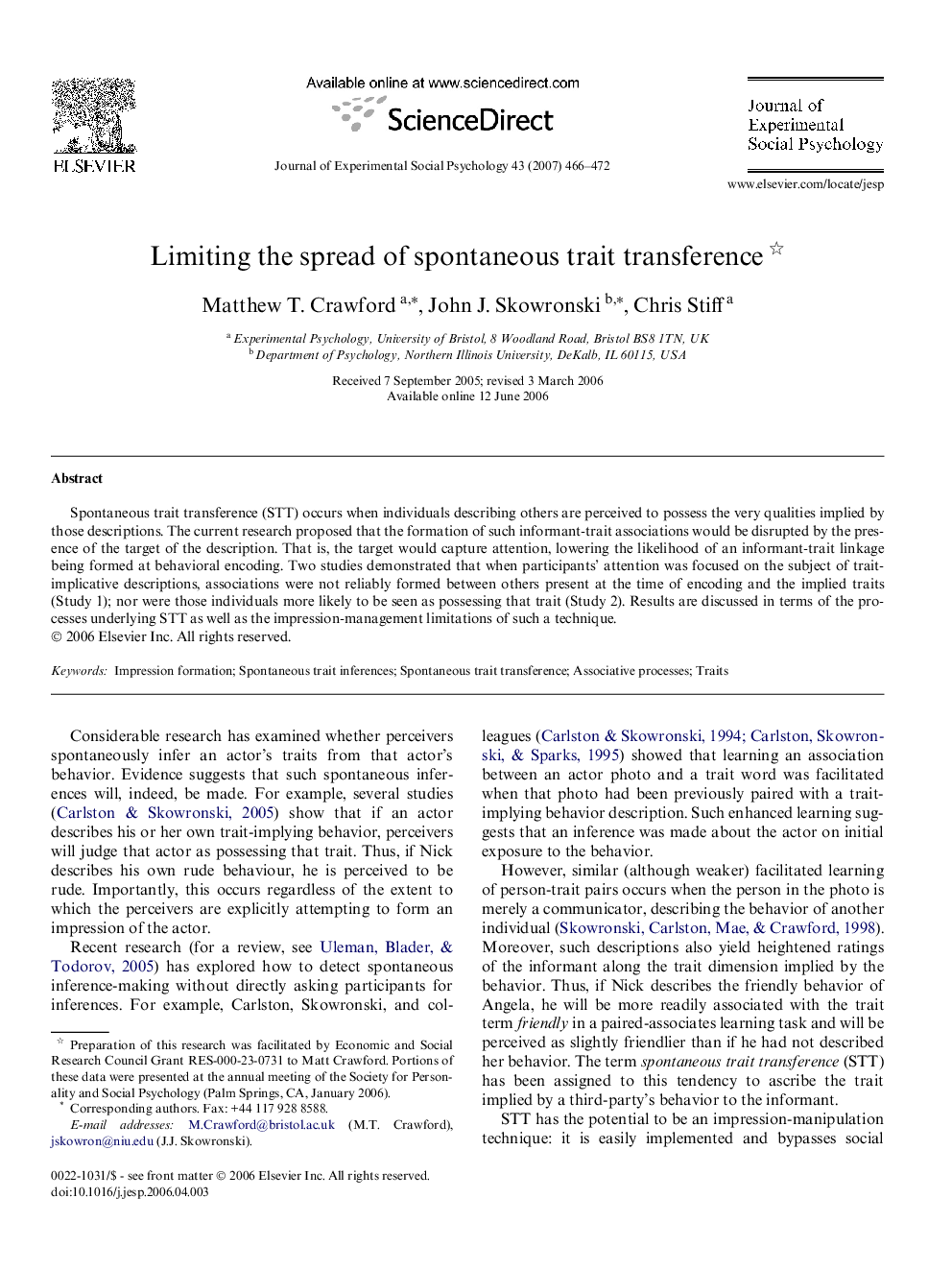| Article ID | Journal | Published Year | Pages | File Type |
|---|---|---|---|---|
| 948915 | Journal of Experimental Social Psychology | 2007 | 7 Pages |
Spontaneous trait transference (STT) occurs when individuals describing others are perceived to possess the very qualities implied by those descriptions. The current research proposed that the formation of such informant-trait associations would be disrupted by the presence of the target of the description. That is, the target would capture attention, lowering the likelihood of an informant-trait linkage being formed at behavioral encoding. Two studies demonstrated that when participants’ attention was focused on the subject of trait-implicative descriptions, associations were not reliably formed between others present at the time of encoding and the implied traits (Study 1); nor were those individuals more likely to be seen as possessing that trait (Study 2). Results are discussed in terms of the processes underlying STT as well as the impression-management limitations of such a technique.
